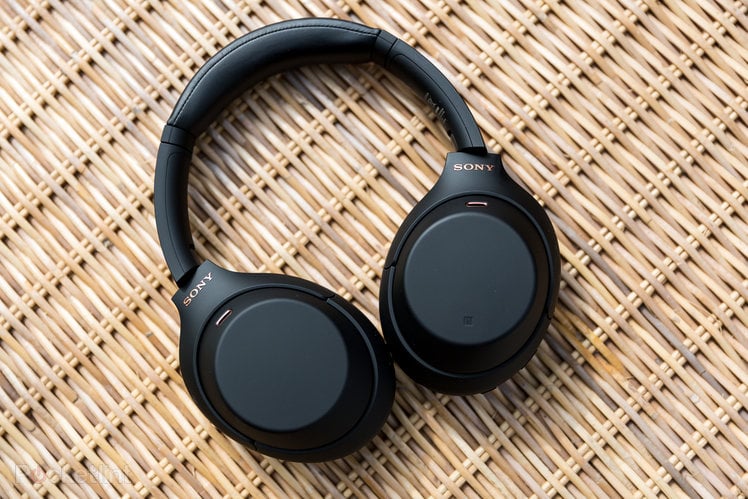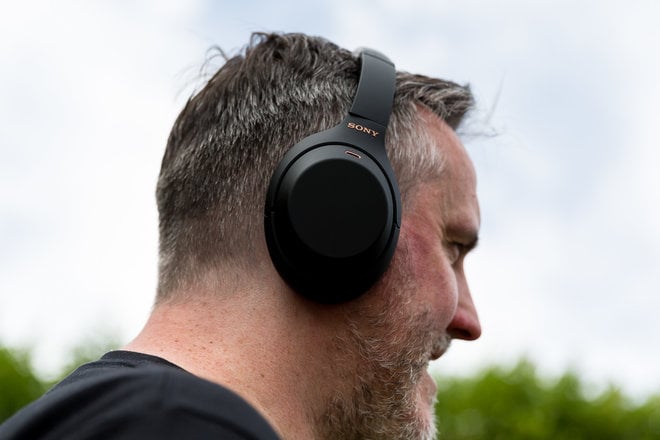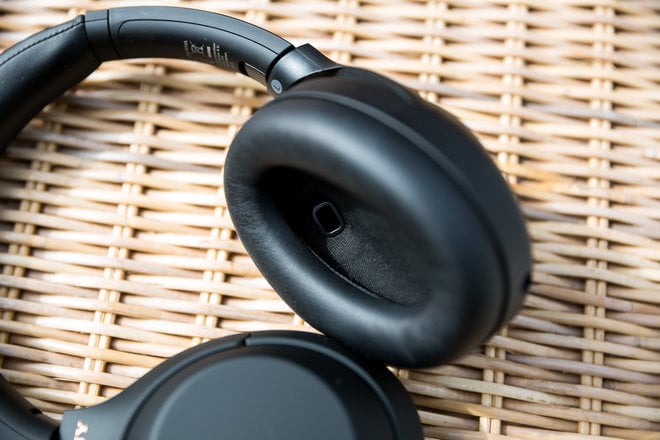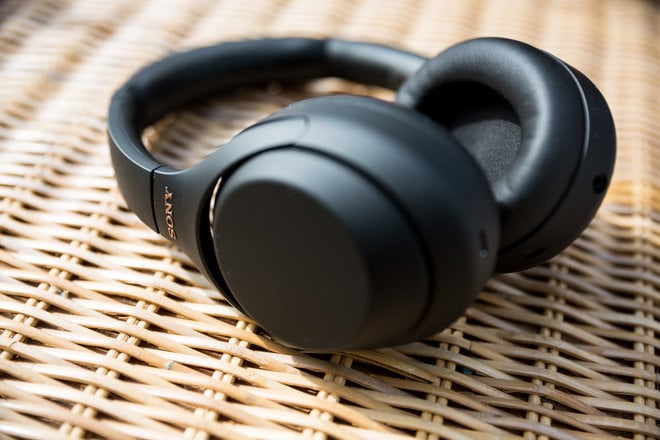
Since Sony entered the noise cancelling headphone field, with the MDR-1000X in 2016, many have strived to keep up. There are a handful of brands that compete in a similar price category, with some excellent alternatives out there, but even though we’ve only had a couple of days with the WH-1000XM4 so far, it seems that the firm has raised the bar once more.
We will be putting them through a more thorough test in the coming days, but here are our initial thoughts on Sony‘s latest wireless noise cancelling over-ears.
Build
- Fine-tuned headband curve
- 10 per cent larger earpads
The Sony WH-1000XM4 headphones look similar to their most recent predecessor, but a few minor tweaks make for a more comfortable wear for longer periods.

They are a tad lighter, for starters, with a remodelled headband and slimmer head cushion. The earpads are larger and softer, while the earcup itself is slightly thinner.
The end result – as far as we can tell after short bursts of testing – is that they feel snug but without the tightness or heft of some rivals, which make those particular models tricky to wear on a long haul flight, say.
To be honest, we’ve always been impressed with the Sony’s for comfort, having used the original 1000X and 1000XM3s on flights in the past. Naturally, it’s tricky to do the same with these during the pandemic, but we can’t see why they would be any different, if not even better.
Tech and features
- Adaptive sound control
- Bluetooth
- NFC
- Google Assistant / Alexa support
There is plenty of new tech both in and outside of the headphones, with improved noise cancellation, new digital audio upscaling talents and general usage enhancements.

A new proximaty sensor inside the left cup detects when the 1000XM4s are removed, pausing playback and even turning them off entirely (after 15 minutes) if they are left dormant.
Touch sensors on the outer right cup return, enabling track skipping, volume controls and play/pause, while a new feature allows you to hold your hand over the cup to temporarily lower the volume and turn on ambient sound so you can hear what’s going on in your surroundings.
Even more impressive is the ability to automatically pause audio playback and turn out ambient sound by simply speaking. Just start to talk and the headphones will switch into “speak-to-chat” mode, so you can have a conversation without having to remove the headphones. Then, when finished, the music starts up again.
We haven’t had a chance to test this properly yet, considering the current lockdown measures in the UK, but can certainly see the potential. Being able to talk to a flight attendent without having to stop what we’re listening to first, for example, will be very handy.
Adaptive sound control has been added this time around. Connect the headphones to your iOS or Android device via the dedicated Sony app and you can set them to automatically adjust the noise cancelling properties depending on your circumstance. This is something we used to great effect with the Sony WF-1000XM3 true wireless earbuds.
This time, however, the ‘phones will also adjust the ANC signature depending on favourite locations. Using your phone’s GPS, it can store different, frequently used places to instantly switch to the sound mode best suited. Again, we haven’t been able to test this fully due to a lack of travel, but it certainly sounds neat, and each of the ambient sound modes work great from our initial testing.
In terms of other technologies, the 1000XM4s are compatible with Alexa, Google Assistant and Siri, while enhanced Bluetooth connectivity now allows you to connect to two devices simultaneously. You can switch between them simply and the ‘phones will prioritise calls on one device as you listen on another.
Audio performance
- High-Res Audio
- 360 Reality Audio
- QN1 NC processing, Bluetooth Audio SoC
- DSEE Extreme upscaling
Considering how great the 2018 XM3 model sounds, this was the area that needed the least amount of improvement. However, work has been done to ensure just that.
The same noise cancelling chip is used – Sony’s own QN1 – but it has now been coupled with a new Bluetooth Audio SoC (system-on-chip). These combined enhance the ANC algorithm.

Basically, while you might never truly notice the differences, more ambient noise can be filtered than before, without affecting the listening experience.
In addition, the headphones now come with DSEE Extreme technology, a generational leap over the system used in the former device. It uses new Edge AI smarts to further upscale compressed audio files to sound almost lossless. Indeed, our test tracks we’re mainly standard 192kHz MP3s and therefore needed the work to get them to shine.
The 1000XM4s are also certified for 360 Reality Audio – Sony’s own virtual surround sound file type. While you don’t specifically need a dedicated pair of headphones to enjoy the tech – it’ll work on any – we particularly enjoyed listening to Liam Gallagher’s Unplugged gig available in 360 on Tidal. A spot of Elvis went down a treat too.
Strangely, the Sony Headphones Connect app takes photos of your ears to adjust the 360 experience especially for you, and although we’re not exactly sure what trickery is being employed, it certainly does the trick.
These are supremely good headphones for sound quality – with ANC both on and off.
Battery and charging
- 30 hours battery life (claimed)
- Fast charge – 10 minutes for five hours playback
We didn’t really have the time to test the battery life of the Sony’s ourselves. But a claimed 30 hours will be highly impressive if it gets near that.
We did check the charging claims though, and have to say that the 10 minutes of charging for five hours of playback is highly welcome.
In reality, as the wearing detection turns the headphones off entirely after 15 minutes of standby, we doubt you’ll charge them that often. When we test more, we’ll be interested to see how long we can leave them dormant and then pick them up again.
Wireless headphones have come on leaps and bounds in terms of battery longevity in recent times, that’s for sure.
